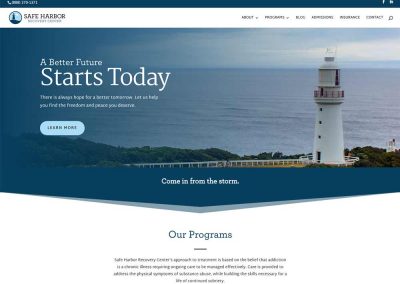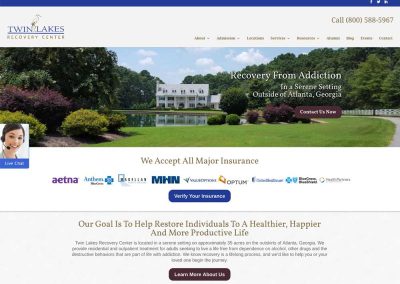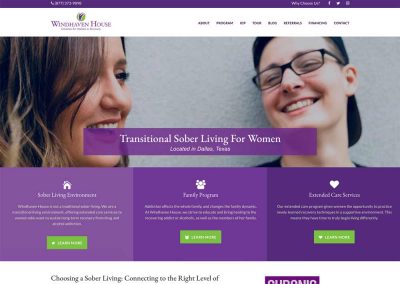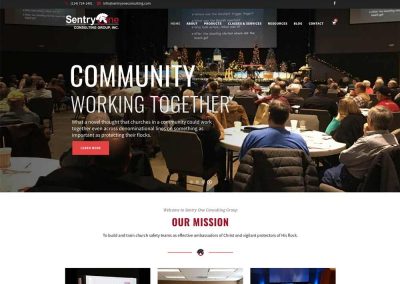Treatment centers are in a tough spot in deciding the marketing approach to use, as there is a fair amount of prejudice around how this should be done, given that they are in the business of helping save lives.
Setting aside the obvious natural mechanism of alumni referrals, many believe that marketing treatment centers should otherwise only rely on referrals from professionals who have regular contact with addicts and their families. That these professionals should assess any prospective client, and through knowledge of available services (ostensibly through the traditional referent marketing avenues) make the referral to the treatment center which is the best fit for the client and family. This is an excellent method, because in theory the client is placed where they need to be. But this does not constitute a well-rounded marketing plan, and in order to be successful in this industry we must diversify the effort of marketing. In the implementation of this more complete marketing strategy, there is sometimes some internal consternation. A closer look reveals a core issue, which is rooted in a natural disparity: clinical ethics versus business sustainability.
Suffice it to say, treatment centers must merge the life or death errand of treating addiction with the economic reality that to survive the business must be sustainable. Many treating clinical professionals develop a conflict with the marketing department in regards to the effort of marketing treatment, or with leadership in the effort of sustaining the business end of the facility, and vice versa. It would appear that the ethics disagree. But is this true, or simply a communication and understanding issue? I’ve never met a clinician that didn’t want to help people. Ever. Further, I’ve never met a treatment marketer that didn’t want to provide those clinicians with people to help. And any good marketer knows that in order to fulfill that goal the people they funnel into the treatment center need to be appropriate placements. It seems to me that the relationship is quite complementary.
Having said that, as a treatment executive I have observed a few tendencies. First, there is a tendency for clinical people who have become frustrated with a tough case to either deem it a bad admit or later an inappropriate for the center – and they often blamed the marketing effort for the placement. To eliminate the immediate problem, they mobilize to transfer the client somewhere else, somewhere more appropriate. Conversely, the marketers (including admissions) tended to take the position that enough had not yet been done, or that the clinical team is too narrow about the appropriateness of clients. Since a marketer or admissions person will likely become involved in the referral out, they wondered just where is this person to go that provides something we don’t? These challenges would often wind up on my desk, as the facilities I’ve worked for made team decisions only, which involved not just the clinical team, but the other key teams, comprising the entire team.
We found through review that only a percentage of the cases up for transfer were actually justified. For us, it had to pass the acid test of whether we were transferring out a “problem” or transferring to a “solution.” We did not allow convenience of staff, or for that matter, marketing performance metrics or business finance numbers to affect our decisions. With our core mission and philosophy fully understood, we let what was best for the client and family – before, during and after treatment – guide us, and everything else followed intelligently from there. When we challenged the situation, we found that more often than not, our clinicians and marketers would rise to the task. We made a commitment to turn over every rock and be very thorough in all processes. We challenged our clinicians to be realistic about the spectrum of case difficulty and we challenged our marketers to accept the reality that the people on the firing line faced a complex set of challenges, not to mention an ethical code to which they must adhere. We compromised with each other, without selling out on the client. We met frequently to communicate each other’s challenges, go over cases, and build trust internally. We looked for consensus rather than agreement, accepting that we would not always agree. Through this effort, we were able to diversify both areas, that is, the methods we used to bring in clients to treat, and the spectrum of cases we could treat when they got there. Like recovery itself, the solution came from the inside out, and became void of departmental disparity. For the most part, anyway.
Merging the two concepts, treating lives clinically and business sustainability through marketing treatment is a challenge for any treatment center. However, recovery principles may be used at every turn, and when used a more successful team is created, and therefore treatment services become more successful. What appeared to be disparate facets of the same business found common ground – and the treatment and the business both benefited. But the big winner was the client.





